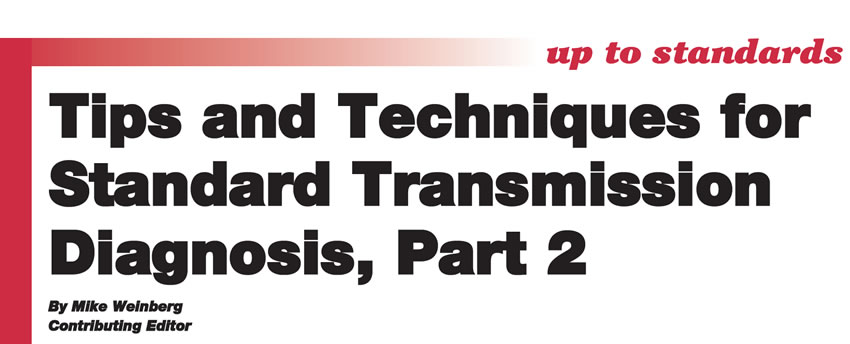Diagnosis with Pressure Gauges
Not too many years ago, before computers found their way into cars, the pressure gauge was the technician’s main diagnostic tool. The pressure gauge can check pump capability, line rise, pressure-regulator and pressure-boost-valve operation, minimum line pressure and maximum line pressure. You can even see a crack in the filter neck on a pressure gauge without pulling the pan! Did you know that with the help of a pressure gauge you can get a good idea of whether non-OEM frictions were used during a rebuild, causing a harsh upshift?

Sometimes It’s Not So Bad When It’s Bad
The input-shaft and output-shaft speed sensors used in the AF23/33-5 (AW55-50SN) are two-wire Hall-effect sensors, which means they are supplied with a voltage source on one wire and send a signal back to the computer on the remaining wire.
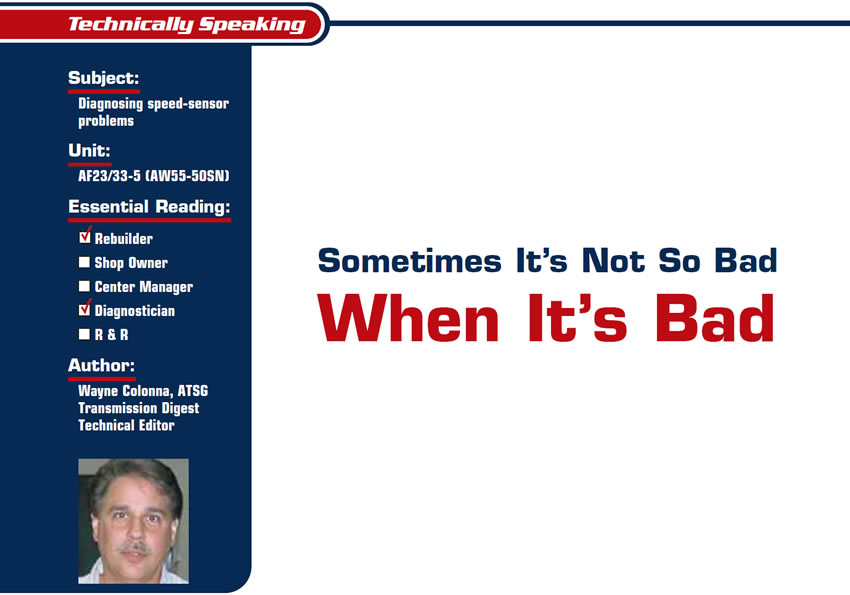
Theory, Facts and How What You Don’t Know Can Hurt You
To start this off with a bang, transmission repair is now an outdated term. Sure, you work on transmissions, but in reality you are working on a motor vehicle. This vehicle has an engine, a transmission, a driveline, a suspension, brake system, cooling system etc.

Diagnose with Data
Some folks have not had an opportunity to use data recordings as a diagnostic tool. When you first start looking at recordings, there appears to be so much data that it’s hard to find the answers. There are a few techniques I have found very useful in getting the information I need. The “before” graphs show the readings used to verify the complaint and diagnose the problem.
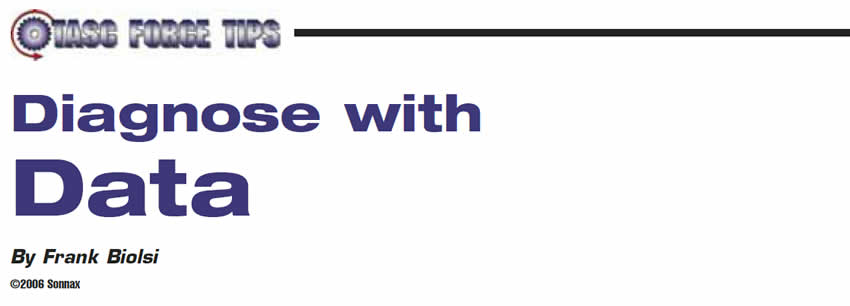
Deceived
One step many technicians take in diagnosing transmissions that have electronically controlled line-rise problems is to unplug the pressure-control solenoid. If the solenoid, pressure-regulator valve and pump are in good working order, line pressure will rise to about 150 to 170 psi at 1,000 rpm in Park. If it rose to only 80-90 psi or didn’t rise at all, this would indicate that a problem existed inside the transmission.
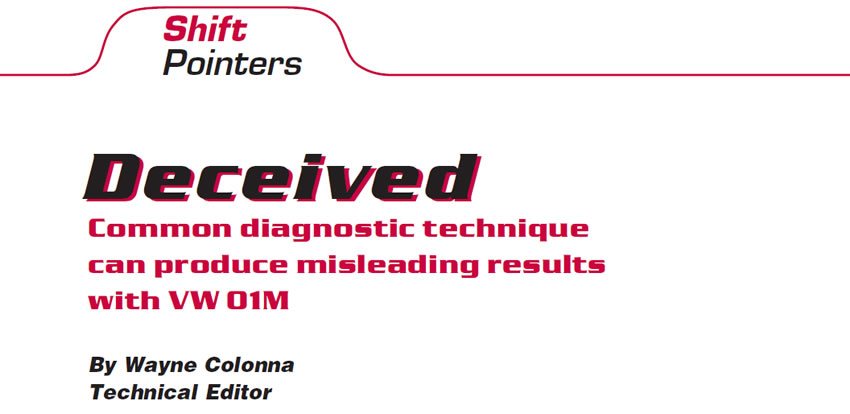
Solving Difficult Problems: Think Outside the Box
It is easy to lose one’s way and become embroiled in solving problems that actually do not exist. This is where the development of a proper diagnostic method of thinking a problem through before actually turning a wrench is a must. We as technicians are always guilty of attacking the unit when any number of external forces can create the problem that has shown up while it’s under warranty.
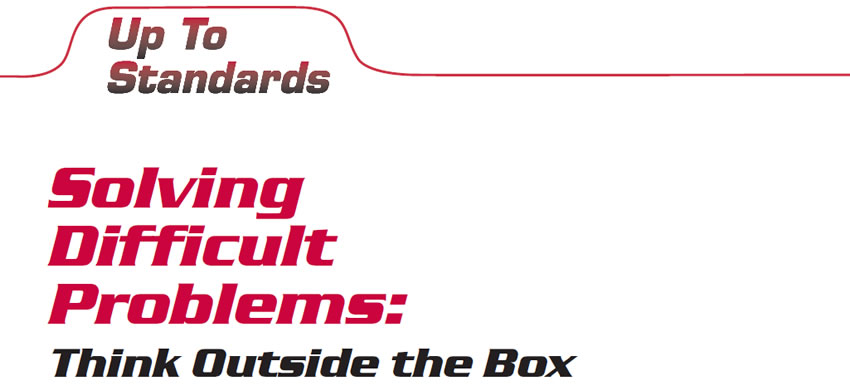
Diagnostic Dilemmas
So what is fuel trim? Fuel trim is rebalancing the fuel mixture for reduced emissions. It is a number that represents the computer’s learned amount of total fuel need. That number is derived from the time the fuel injectors are pulsed on and off. The higher the fuel-trim number, the more fuel is being commanded, the more injector pulse-on time. The lower the number, the less fuel is commanded, the less the injector is pulsed on. The fuel-trim command is a result of what the oxygen sensor tells the computer. You don’t want to see short-term fuel trim over 10 on your scan tool. Fuel trim starts at 0 and can go positive (more fuel) or negative (less fuel).

Fix in a Flash
Occasionally, we find the problem to lie outside the transmission/transaxle, in such parts as the MLPS (manual-lever position sensor), TPS (throttle-position sensor) or MAP (manifold-air-pressure) sensor, to name a few. Though it’s rare, even the computers/modules (such as the vehicle control module (VCM), transmission control module (TCM), powertrain control module (PCM) or engine control module (ECM)) fail from time to time. We have become accustomed to troubleshooting these systems, and although they are becoming somewhat routine, we all know that we run into some problems that “push” you. They either push you into being a better technician or push you closer to finding a different occupation.
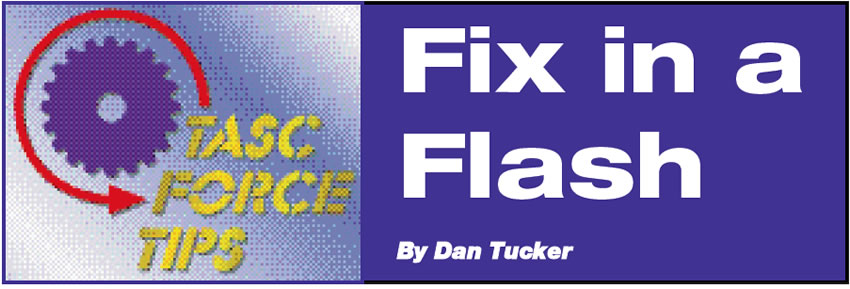
Tips and Techniques for Standard-Transmission Diagnosis, Part 2
When you arrive at a formula that fits your operation, it must become what the Army used to call SOP (standard operating procedure) for handling technical problems, comebacks, never-lefts, initial diagnosis and root-cause failure analysis. Throw away the shotgun approach, stop making assumptions and follow the methodical process that you design to lead you to consistent problem solving. Let’s look at some real-world scenarios.
